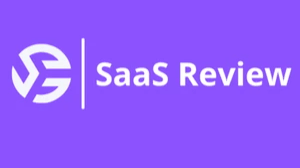General Artificial Intelligence (GAI) is a theoretical concept in artificial intelligence (AI) where a machine/system possesses the cognitive abilities of a human, enabling it to understand, learn, and apply knowledge across various tasks and domains. Unlike current AI systems, which are designed for specific tasks, GAI aims to replicate the broad intelligence and adaptability of the human mind.
In this article, we examine General AI’s transformative impact on the Software-as-a-Service (SaaS)
industry through the lens of autonomous agents.
GAI: immediate Impacts on SaaS (2024-2026):
Hyper-Personalization at Scale
GAI enables real-timeadaptation of UI, features, and workflows for individual users (e.g.,Salesforce Einstein Auto-Pilot). It goes beyond traditional personalization by analyzing user behavior, preferences, and contextual data in real-time to deliver customized content, recommendations, and interfaces. A recentstudy of McKinsey is expecting 30-50% reduction in onboarding time and 20%+increase in user retention.
The shift from "Tools" to"Copilots"
SaaS interfaces evolve from dashboards to conversational agents like HubSpot Content Assistant (an
ai powered copilot that is designed to help users create, improve, and optimize content across various platforms, including blog posts, landing pages, emails, and social media) this shiftcan turn software from a passive instrument into an autonomousproblem-solving partner that learns user behavior, adapts to context, and executes complex, multi-step objectives with minimal supervision.
Autonomous Workflow Execution
Think of GAI agents that perform multi-step tasks across SaaS platforms without human intervention they speak to each other take business decisions in a fully autonomous way and this is being done through complicated automation. Now we can see the beginning of what we’re talking about in n8n; it’s an open-source workflow automation software that lets you build automated processes without writing a ton of code. It's like having a digital assistant that glues your apps together, handling tasks like data syncing, alerts, and even multi-step business processes automatically.
Next-Level SaaS Evolution (2027+):
Self-OptimizingApplications
In this area we can mention GAI’s software self-training and maintenance; that means SaaS can be improved based on a strategy that actively identifies possible performance issues before they materialize. Predictive maintenance employs AI algorithms. They track SaaS performance metrics, user activity, and backend processing. These data enable the prediction of problems such as crashes, slow launches, and server overload before they affect users. Through the integration of machine learning models, statistical analysis, and past data, AI facilitates a transition from reactive to proactive maintenance approaches.
Some of these applications mentioned above are already in action in the mobile apps domain, but if integrated in the SaaS business they can revolutionize the sector especially through increasing performance, minimizing downtime, and decreasing long-term costs. They can also make sure that SaaS are in top condition to remain competitive.
Vertical-Specific AI Agents
Vertical-specific AI agents are specialized artificial intelligence systems designed to excel within a particular industry or domain, like healthcare, finance, or legal. Unlike general-purpose AI, they possess deep knowledge and understanding of the nuances, workflows, and regulations of their designated field, allowing them to perform specific tasks with greater accuracy and efficiency.
They are not just chatbots; they are capable of automating tasks, making decisions within defined parameters, and integrating directly into business workflows. Vertical AI agents will introduce a huge shift in how industries deploy AI, a few of these industries being:
Healthcare:
Imagine SaaS with HIPAA-compliant diagnostic co-pilots; an AI-powered tool that assists with diagnostic tasks within a healthcare setting, while adhering to the privacy and security regulations of the Health Insurance Portability and Accountability Act (HIPAA). This means the tool must handle Protected Health Information (PHI) securely and confidentially, ensuring patient data privacy is maintained.
These copilots can deeply integrate with electronic health records to streamline processes like appointment scheduling and patient data management. They can also support diagnostic processes by analyzing patient histories and diagnostic data, helping medical professionals get quicker, data-driven insights.
Early vertical AI winners:
Vertical AI agents arealready used in companies to automate business operations. A few of the early
winners are:
Agentic: Automates various business processes to enhance productivity andstreamline operations.
Sierra: Specializes in data analysis and business intelligence, providinginsights from large datasets for better decision-making.
Writer AI: Builds AI apps and workflows into business processes.
Data Moats Become AI Moats:
A data moat is acompetitive advantage based on exclusive access to unique and valuable data that competitors can't easily replicate. An AI moat, on the other hand, is a competitive advantage built on the capability to leverage artificial intelligence to create a sustainable edge, often involving proprietary data and AI-driven learning systems. Essentially, a data moat provides the raw material (data) for an AI moat, which then uses that data to build an advantage. How it works?
Companies with AI moats use their data (which may include a data moat) to train sophisticated AI models that can solve complex problems, automate tasks, and personalize experiences in ways that competitors cannot easily replicate.
For example, a company with a strong AI moat might use its data to develop a recommendation engine
that is significantly better than its competitors, leading to higher engagement and customer satisfaction.
Final thoughts:
In essence, GAI represents a significant advancement in AI by enabling the creation of novel and diverse content, expanding the capabilities of artificial intelligence beyond analysis and prediction to generation and creation. This transition turns SaaS from software delivery into autonomous business process orchestration, fundamentally reshaping how enterprises consume technology. The next SaaS landscape will be dominated by AI-native platforms that don't just assist workflows – they own and optimize entire business outcomes.
